The special aspect of plants such as philodendrons is their beautiful variegation. Before spending your money on one you might want to know, if there are chances of them reverting back.
If you are buying it for its beautiful variegation, then you might want to do your research regarding how to properly take care of one.
Can Philodendron revert?
Yes, there are chances of philodendrons reverting. If the weather permits and if you are not taking proper care, then they might revert back to achieve a competitive advantage. There are some ways you can prevent it, but keep in mind that in some cases the reversion is also permanent.
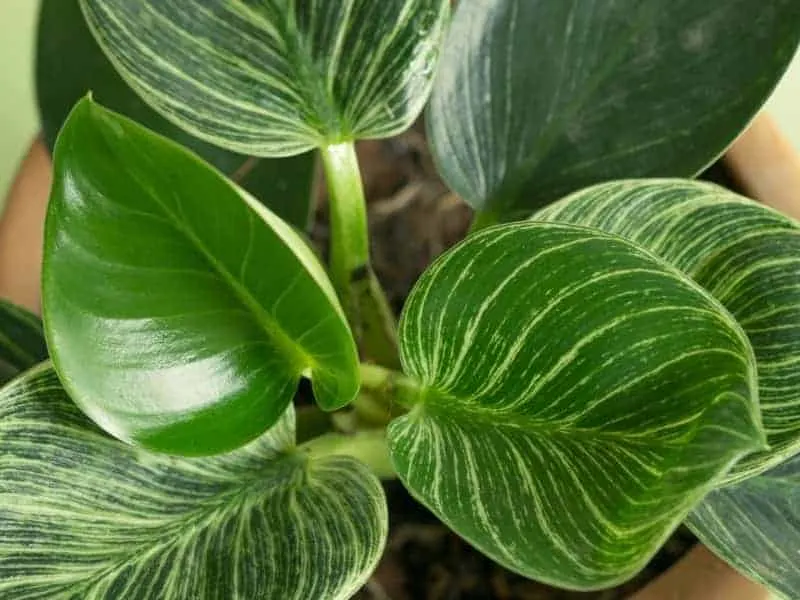
Can variegated Philodendron revert?
Variegated philodendrons do have the chance of going full green and cannot revert back to being variegated. The most common reasons are survival tactics in certain weather conditions or leaf mutation.
Unfavorable conditions tend to spur the changes so that the plant can survive. In that case, it is important that you take proper care of your plants to prevent them from reverting.
Pink Princess:
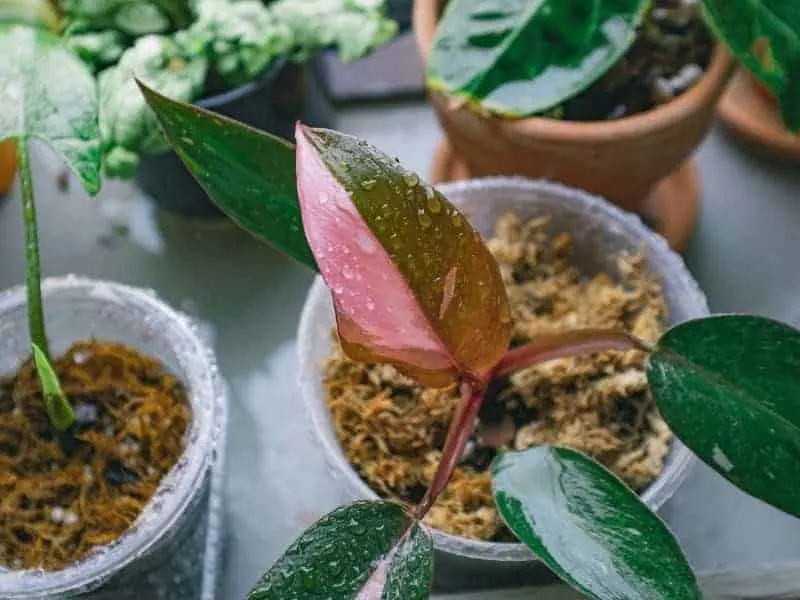
There is a chance of the pink princess losing it’s beautiful pink and reverting back to brown or green. Low light conditions usually trigger this as they end up producing more chlorophyll to survive which turns the leaves green.
A deficiency in plant culture or improper watering can cause the leaves to turn brown. You must keep your plant directly in front of the window, but it should not sit directly in front of the sun to prevent scorching.
Prune your plants if necessary to prevent all the leaves from turning green and keep them away from heating vents.
White knight:

If you put it in a shady area then the plant will revert back to plain green. For this plant, it is necessary that you mimic its natural growing environment.
You must put it in front of filtered but bright sunlight conditions and ensure the light isn’t direct or harsh. The temperature should not drop below 12 degrees and the humidity levels should be high to avoid discoloration of leaves.
Brasil:
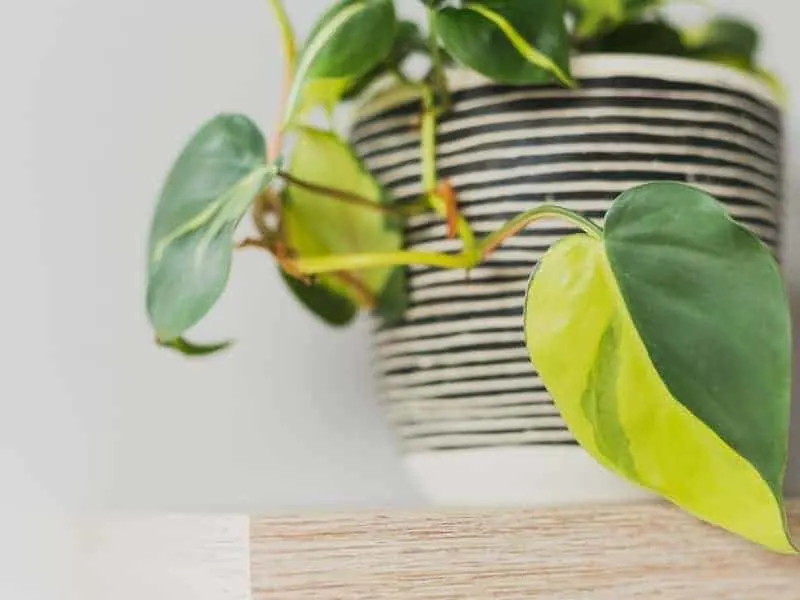
It might revert in very low light and become leggy or start showing spots without proper watering and fertilization. For it to thrive, you must expose it to bright, indirect illumination even if it can tolerate low light.
It can handle normal humidity and prefers warm room temperature. You must water it once the soil dries halfway and fertilize during the growing season.
Birkin:
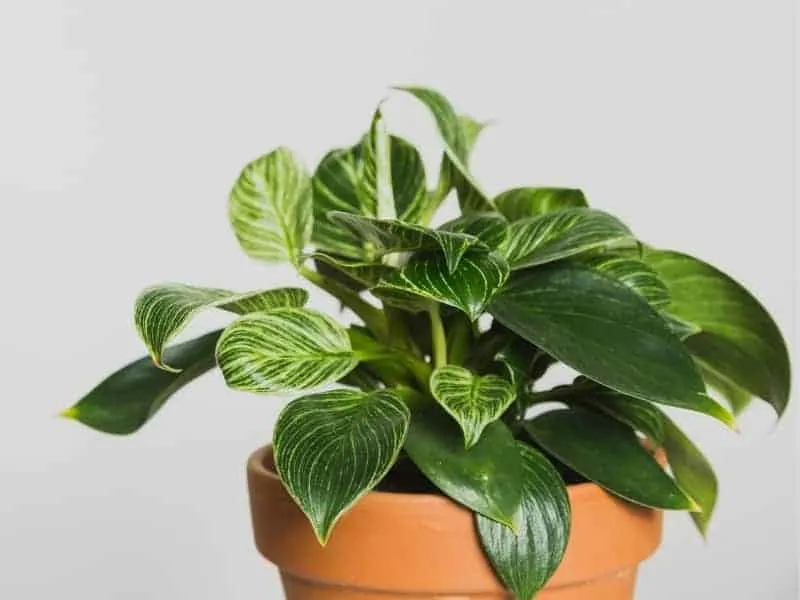
Even though the variegation is stable, there are still chances of it turning green. To prevent it you have to make sure that the plant is getting proper sunlight and cut the plant back to the remaining variegated leaves.
Expose it to indirect but bright sunlight for eight to twelve hours a day at least and keep it away from cold drafts.
Heartleaf:
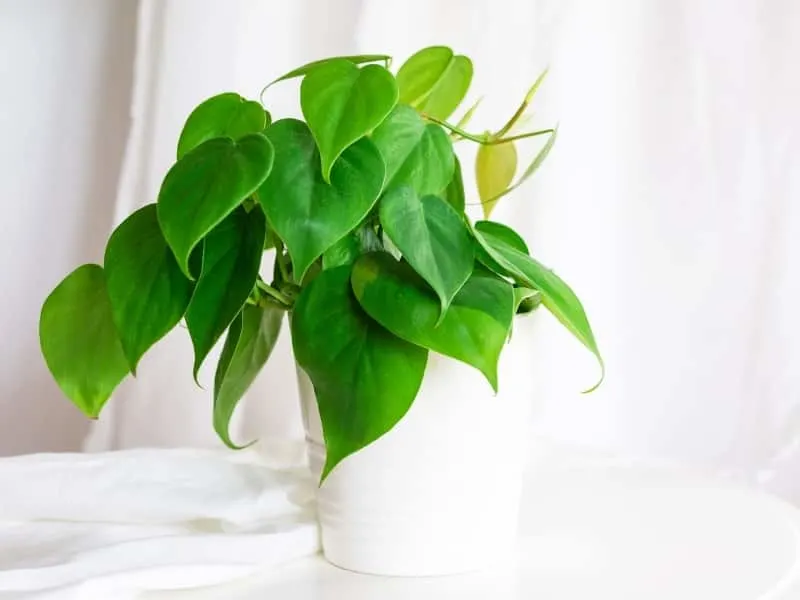
This house plant is the easiest to take care of as it does not have many demands. The variegation itself is not flashy like the others and it will maintain itself in even low light conditions.
Just keep it out of direct sunlight, water it properly, and keep it under proper temperature to prevent the leaves from changing color.
Split leaf:
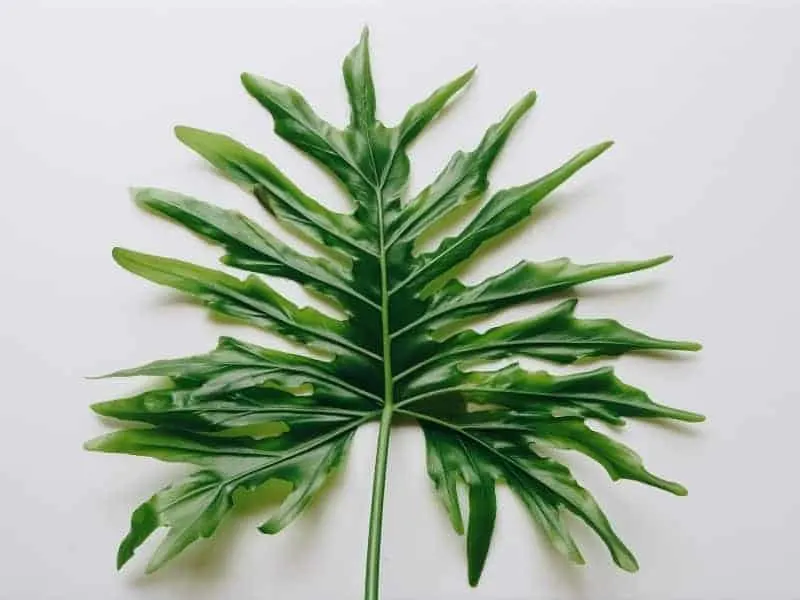
This is also a low-maintenance plant that prefers medium lighting for the leaf to show its unique properties. It also requires moderate watering and ensures to keep the soil evenly moist.
If the leaves start changing colors, then you are not giving it enough light or watering it properly. Also, keep in mind that these plants are quite stubborn and once you place it in one spot moving it elsewhere may cause the plant to act up.
Rio:

These plants are the most likely to revert. Lack of light and excessive feeding can trigger the plant to revert. Keep it in an area of diffused light and ensure to cut off any vines that start to revert because then it catalyzes all the other leaves to revert as well.
Why do variegated plants revert?
If variegated plants are not receiving proper care, then they start reverting back to help survive them in the challenging conditions. There are a lot of factors that can contribute to triggering this.
Not getting enough light:
This is one of the most common reasons that can cause variegated plants to reverse. Variegated plants look the way they do because they do not have the green pigment chlorophyll in abundance.
This is why they arguably need more sunlight to survive. If you keep them in shady areas, then over time the stems and leaves will start reverting back to green to help the plant survive the low levels of sunlight.
Also, ensure that you do not keep them under harsh sunlight as it may cause the leaves to scorch. Filtered, bright light tends to be the best conditions for such plants to thrive under.
Reactions to harsh temperature:
If your plant is in a very hot or cold environment then its survival technique can be by producing more chlorophyll and thus harvesting more energy.
To avoid that, keep your plants as close as possible to the temperature of their natural growing conditions. It will be the best temperature for them to thrive in.
Ensure to keep them away from air conditioners and vents as well. Furthermore, you need to keep them around the humidity that they can thrive in.
Can reverted variegation come back?
Once a plant reverts back to green it is not possible for the variegation to come back. Reverting back to green is a survival technique used by plants to get into a healthier shape.
More chlorophyll means it can harvest more solar energy which can further fuel them to be stronger and healthier.
However, if all the leaves are reverted then you should check the stem of the plant. If the stem still has some variegation left, then you might have some luck in getting the variegation back. If the stem as well has fully reverted, then you are out of luck.
How do you take care and keep a philodendron variegated?
Sunlight:
The most important step in ensuring proper care for your philodendron is to keep it in an area of indirect but bright sunlight. Keep it in an area where the sun’s harsh rays do not directly touch the leaves to prevent scorching.
If the leaves start to show yellow, it is getting too much light and if the growth is stunted it is not getting enough light.
Water:
Allow the top 2.5 inches of the soil to try out before watering your plant and make sure the soil stays moist. If the leaves are droopy then your plant is getting too much or isn’t getting enough water.
Fertilizer:
You need to give your plant proper fertilizer in the growing seasons. You need a balanced liquid foliage fertilizer containing proper macronutrients. Ensure that they are getting enough calcium and magnesium or else the leaves will not grow properly.
Temperature:
Maintain a consistent temperature that your plant can thrive in. Avoid harsh temperatures as they can contribute to the loss of variegation.
If your plant is exposed to a quick change in temperature then it might shock your plant and as a result, it might start reverting to protect itself. You also need to ensure to maintain a constant humidity level that your plant likes.
Pruning:
This is very important to keep your plant variegated. If you start spotting green leaves then start pruning them so that they don’t end up overgrowing the other leaves.
Since leaves having chlorophyll thrive more, they can quickly overtake your plant. And once the stem reverts there is no going back. Once you spot green leaves, clip them off.
How do you increase/encourage variegation in a philodendron?
You can encourage variegation by keeping them in proper sunlight. Do not keep it too far from a window and keep it in front of the east or west window. Keep it in the indirect sunlight for a handful of hours every day and ensure to water it properly.
Clip off any of the green leaves that might start to show up to avoid them overtaking the plant. Also, give your plant the proper fertilizer so that it can grow properly and does not need to rely on chlorophyll to do so.
If your plant starts showing stunted growth, yellowing of leaves, or spots then you need to find the root cause immediately to avoid the loss of variegation.
How to keep pink princess Philodendron pink?
You cannot expect the whole plant to be pink. You need a combination of green and pink to ensure that the plant thrives. Too much pink will cause the plant to not have enough chlorophyll and as a result starve and lode life.
However, to keep the majority of the leaves pink you need to grow it in a bright spot with indirect light. Keep the humidity around medium-high and the temperature between 16-29 degrees.
Water frequently, when the top half of the soil is dry, and make sure the soil contains enough nutrients and retains moisture. Finally, prune stems frequently to promote bushy growth.
You have to invest proper time and energy to take good care of variegated plants. Each plant has particular needs that you must cater to. Their specialty is the delicate leaves and if you take proper care then you will see your plants thriving.
Frequently Asked Questions:
Why Does Philodendron Have Yellow, Brown, or White Spots?
Do Philodendrons Like Coffee Grounds?
Do Philodendrons Like Humidity?
Do Philodendrons Like to Be Misted?
